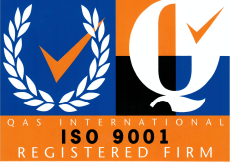Depending on the type of metal being welded, it may be necessary to preheat the base metal before and during the welding process. Work being carried out under some codes may require mandatory preheating.
The required preheat temperatures will depend on the carbon and alloy content of base metal. Generally steels with higher carbon content will require higher preheat temperatures.
Mainly preheating is undertaken to remove moisture form the region of the weld, and also to lower the thermal gradient between the welder’s heat source and the colder base metal being welded. Removing any moisture reduces the risk of weld porosity and cracking through the introduction of hydrogen during the welding process. A high thermal gradient and any consequential rapid cooling that exists during and after the process of welding may cause undesirable stresses and distortion around the weld. These problems are introduced by differential expansion of the welded material. More serious effects of high thermal differential can include cracking and crystalline change to the material.
A badly applied preheating procedure may reduce the metals resistance to wear, make the material hard and brittle or make it prone to oxidisation and scaling. National Heat’s experience, our pursuit of quality and our trained technicians are our guarantee that preheat procedures and mandatory code requirements will be properly followed.
National Heat offer quality on site preheating solutions in Australia and the Pacific Region.
View Other Services




